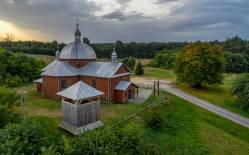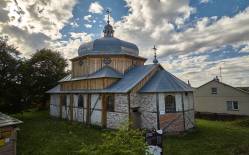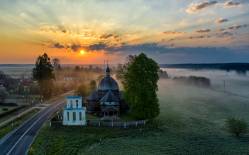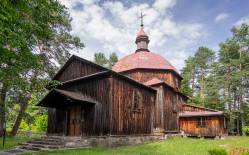The tserkva was built in 1586. Originally, the tripartite building had a single dome over the nave. A separate chapel may have been situated on the upper floor of the narthex. The chancel featured a barrel vault, and was adjoined by a pastophorion. Its characteristic feature was the 17th century iconostasis wall with polychrome decorations, which have been preserved. A new architectural iconostasis was added in the late 17th century, concealing the original paintings for two hundred years. The architecture and interior design were altered during numerous reconstructions.
After the Ukrainian population was forcefully relocated in the 1940s, the tserkva was used as a filial church of the parish in Cieszanów.
In 1991–2001 the side naves were removed and the original design of the walls was restored. During conservation works the original polychrome decorations were uncovered and in 1995 the iconostasis, concealing the paintings, was taken to Kraków, where it was renovated to be brought back here only in 2011.
The log building has stone foundations. Over the nave there is a square log dome with a single recess, and topped with a false roof lantern. Over the chancel we can see an octagonal dome supported on a drum. The narthex is covered with a false octagonal dome, and inside it features a beam ceiling.
The lower part of the log structure is protected by a wide skirt roof, supported on rafter tails. The walls above as well as the roofs are clad with shingles. There are three entrances: the main doors in the narthex, with the date 1835 carved on the lintel, as well as in the southern wall of the nave and in the northern wall of the chancel.
The wooden bell tower, dating from 1860, was moved to its location next to the tserkva in 1994 from Majdan Sieniawski. The original wooden belfry, build in the late 18th/early 19th century was dismantled in the mid-1970s.
Gorajec is also known for “Chutor Gorajecki” and Folkowisko Festival.
Other notable landmarks here include the old Greek Catholic cemetery with tombstones made by artisans from Brusno, a stone cross commemorating abolition of serfdom in Galicia in 1848, and interesting roadside crosses and shrines.
Photo: Krzysztof Zajączkowski, Krystian Kłysewicz - from the collection of Museum of the Eastern Borderland in Lubaczów
Gallery
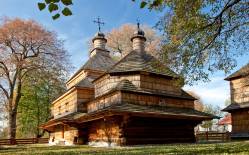
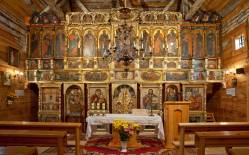
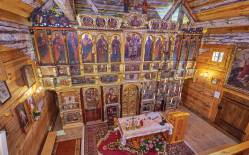
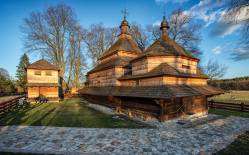
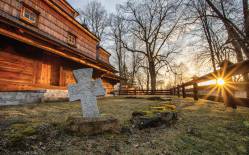
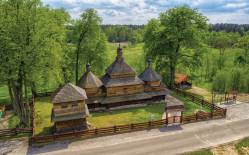
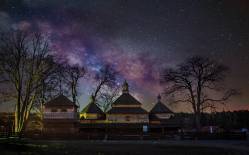
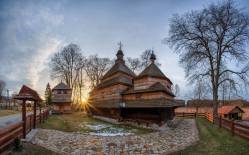
Recommended venues on the Trail



This website has been modernized with the financial support of the European Union under the Cross-Border Cooperation Programme Poland-Belarus-Ukraine 2014-2020. The responsibility for its content lies solely with the Podkarpackie Regional Tourism Board and cannot, in any case, be treated as a reflection of the position of the European Union, the Managing Authority, or the Joint Technical Secretariat of the Cross-Border Cooperation Programme Poland-Belarus-Ukraine 2014-2020.










